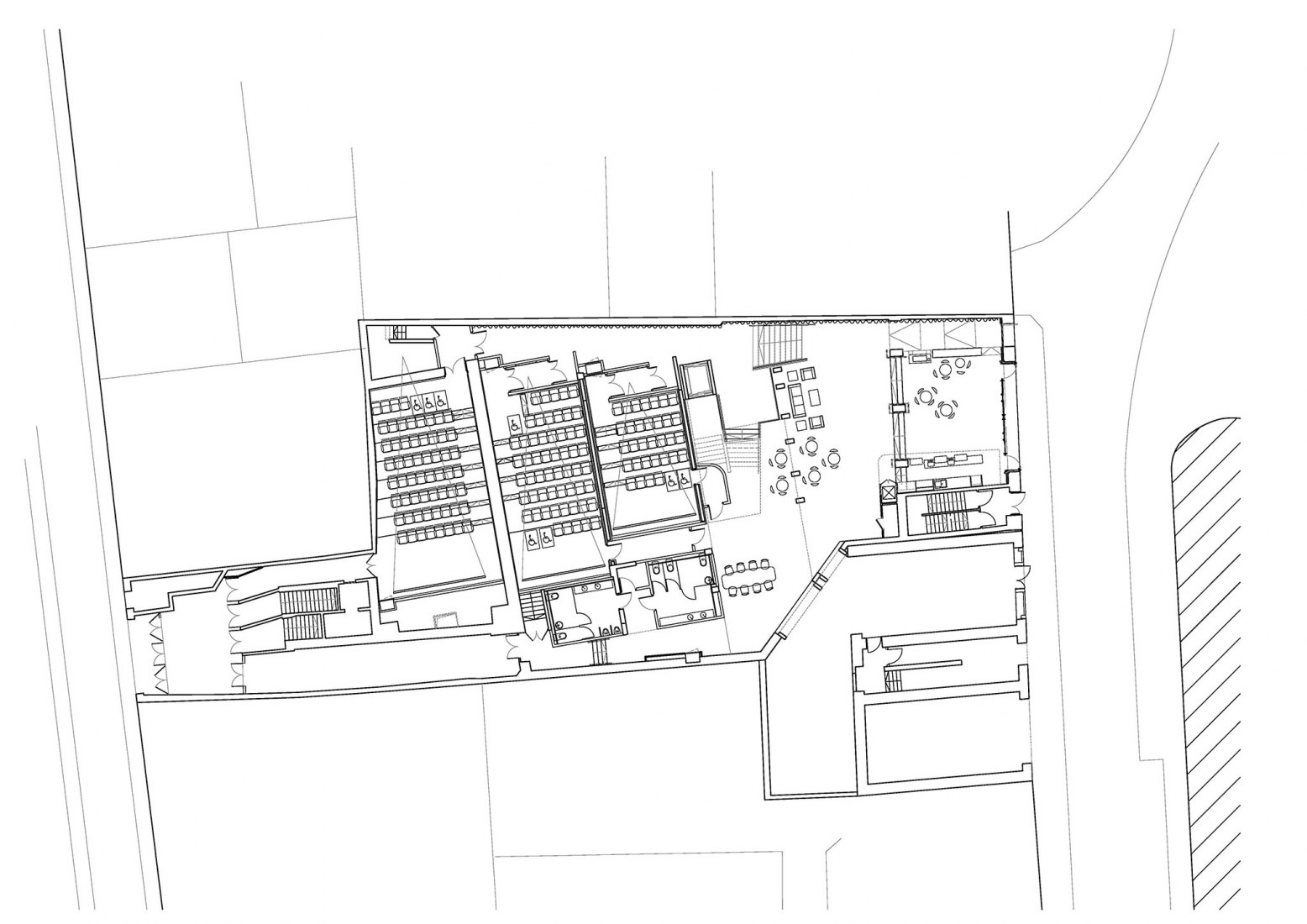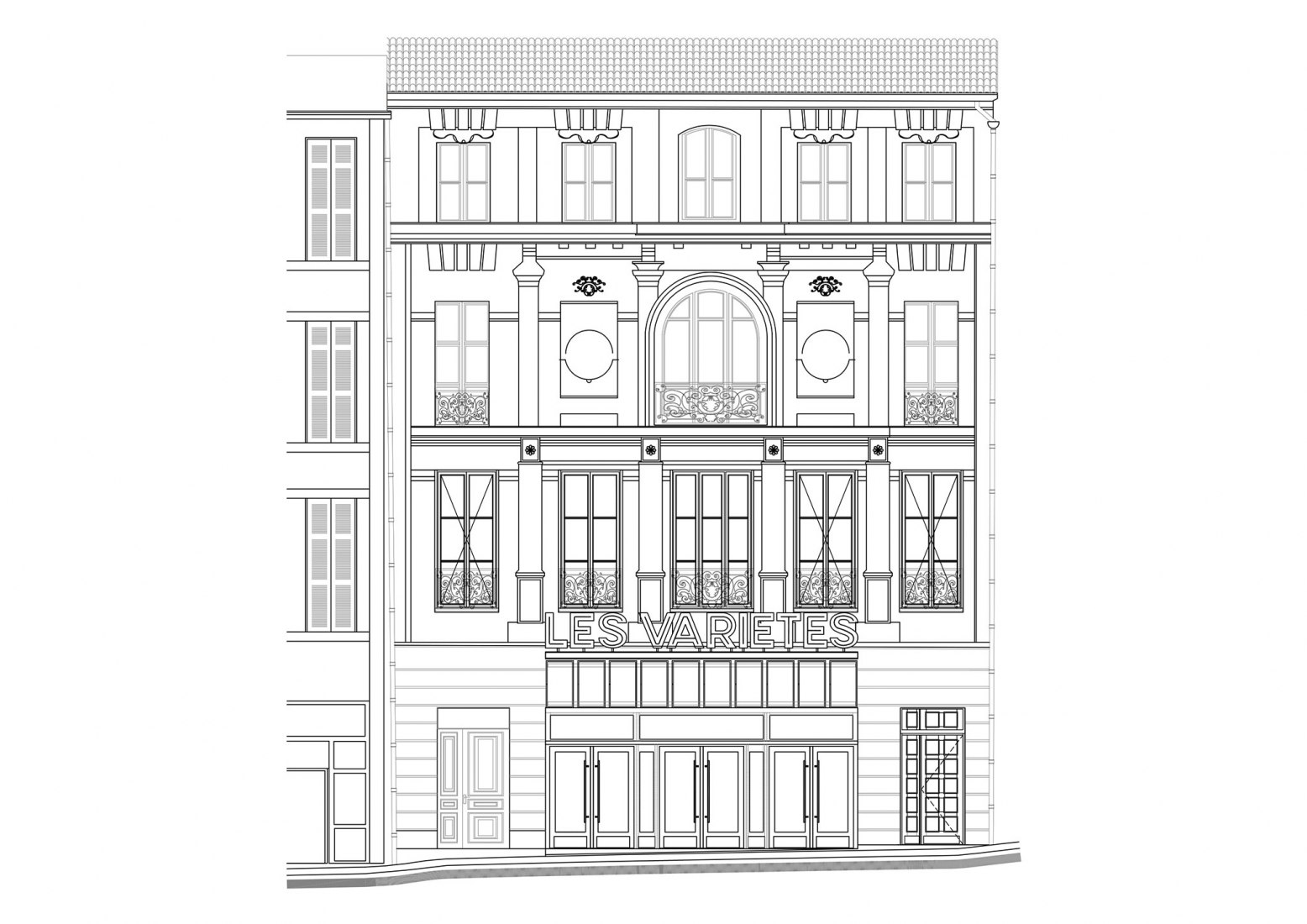This deep restructuring of cinema includes two new cinemas. The removal of the many old corridors and several sanitary facilities has released a central atrium, capturing light on the roof and lighting a large sculptural staircase, distributing at once the three mezzanine rooms and the four upper-floor rooms.
Project description by Atelier d'Architecture Lalo
The Cinéma les VARIETES, the historical temple of art and essay cinema, has revived its spotlight on the Canebière in Marseille.
The architectural concept focused on the theatricalization of the city’s public’s journey to the halls. The façade has been refurbished, with new wood joinery matching the 19th century style that saw the birth of this place dedicated to the musical arts. The foyer has expanded to accommodate indoor queues with seating.
The spaces of reception of the public are upgraded by prefiguring the connection with the future restaurant planned by next year; who propose a «author’s cuisine».
This profound restructuring of cinema includes two new cinemas. Access to cinemas, once complicated and labyrinthine, have become smooth transitions on both floors, in progressive steps and open to the foyer. A lift has been inserted between the volumes to accommodate all people, even our friends moving with difficulties.
Thus, the removal of the many old corridors and several sanitary facilities has released a central atrium placed at the center of gravity of the cinema. This new central empty space, capturing light on the roof and illuminated by suspensions floating in space, now hosts a large sculptural staircase, distributing at once the three mezzanine rooms and the four upper-floor rooms.
All the image and sound equipment is replaced by the last generations while avoiding sensory attraction to the detriment of the film itself. The number of chairs has been reduced for the benefit of the comfort of the spectator, with a great flexibility of the seats, dressed in a dark burgundy velvet, and their positions have been revised in order to improve the vision of the screen.
With this new identity, this Marseilles cinema (the city’s first theatre) takes on a new impetus in the face of competition from commercial cinemas. Beyond a fixed profile, this new venue will offer new dynamics: concert broadcasts, conferences, master-classes, duplexes, a whole series of new possibilities allowed today by digital equipment, eliminating the distance with the world, with possible capture and diffusion in long courses.
Film-receiving cinema opens up to new dimensions and now becomes a transmitter, a place of topical interest, a place of radiation as the essential element of cinema: light.








































